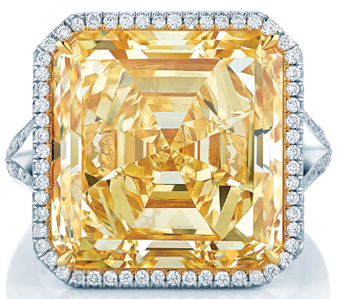Gem
Diamonds Ltd.'s rough diamond production for the first quarter of 2013
totaled 18,775 carats compared to 30,181 carats recovered in the fourth
quarter of 2012. The 37.8 percent reduction in Letseng output during the
period is as a result of the lower tonnes of ore mined and treated and
mining taking place in lower grade areas, reports the miner.
"As
anticipated, this quarter was in line with our reduced expectations for
grade and quality. Throughput was relatively low, albeit planned. Rough
diamond prices have improved over the quarter, but this is not
reflected in our results because of the lower quality diamonds mined so
far this year," explains Clifford Elphick, Gem Diamond Chief Executive
Officer.
Gem
Diamonds mined1.45 million tonnes of ore in the first quarter, down 8.5
percent from the preceding quarter, and treated 1.4 million tonnes of
ore, down 9.6 percent from the fourth quarter of 2012. The grade
recovered during the period was 1.27 carats per hundred tonnes (cpht),
down 31.4 percent over the fourth quarter of 2012.
Letseng
According
to the miner, the lower tonnes of ore mined and treated for this first
quarter is due to test work undertaken at two plants at its Letseng mine
in Lesotho in order to establish diamond damage profiles at various
throughput rates in preparation for the site's new crusher
installations. Additionally, an unplanned scrubber breakdown at one of
the plants resulted in a two-day loss of production.
"Mining
will return to the higher value satellite pipe at the end of Q2 this
year. It is anticipated that this will result in improved revenues for
the remainder of 2013," adds Elphick.
Diamond Sales
Gem
Diamonds sold 29,205 carats worth US$46.7 million during three tenders
held in the first quarter, an increase of 3.1 percent in volume but a
decrease of 3.1 in value compared to the fourth quarter of 2012. The
average value per carat decreased 6.1 percent to US$1,599 per carat
compared to US$1,703 per carat achieved in the preceding quarter.
Meanwhile,
six rough diamonds achieved a value in excess of US$1 million each
during the tenders and 24 rough diamonds achieved prices greater than
US$20,000 per carat.
Projects
The
installation of the new secondary crushers for Plants 1 and 2 at
Letseng is underway and on target for installation by the end of the
second quarter. Gem Diamonds says it expects these crushers to
contribute "significantly" to reducing diamond damage and improving
revenues.
The
miner notes that work is ongoing to revise Project Kholo implementation
options, production levels and waste stripping profiles. Indicative
costs, timelines and updates will be provided during the course of the
second quarter.
With
regard to the Ghagoo mine in Botswana, the company reports that its
wholly owned subsidiary, Gem Diamonds Botswana, is progressing with its
development of the mine.























